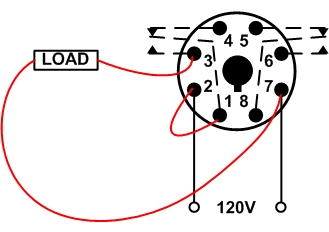Input Voltage Applied But Nothing Coming Out!!
Issue:
When I apply 120V to the input terminals of a time delay relay, why don’t I get 120V out of the output contacts to control my load?
Solution/Resolution:
Think of a time delay relay as nothing more than a control relay with a time delay built-in. When you apply voltage to a control relay, all you are doing is opening and closing a set of contacts whenever the relay coil is energized. These contacts are used as switches to control your load. The voltage to power your load does not come from the relay through its output contacts, but rather from a separate source. The same logic applies to time delay relays. Application of input voltage to initiate a time delay relay does not mean this voltage will be available through the output contacts. As with the control relay example, the user must supply the voltage to power the load being controlled by the time delay relay.

It is possible to use the input voltage connected to the time delay relay to also control the load by jumpering from the input voltage terminals to both the output terminals and the load. Refer to the diagram at right. The 120V coming in to Pin 2 is jumpered to Pin 1, which is the wiper (common) of the N.O. & N.C. relay output. When the internal relay is energized, the N.O. Pin 3 contact now closes, providing 120V to one side of your load. The other side of your load is connected to Pin 7, which is the neutral side of your 120V power supply. NOTE: this circuit will NOT work with the function True Off Delay because when input voltage is removed, so is the voltage powering the load. If you are using a product with an 11 pin socket instead of an 8 pin, you would connect the other side of the load to Pin 10 instead of Pin 7 as shown in the diagram at right.
If you need help, contact Macromatic Technical Support at 800-238-7474.
